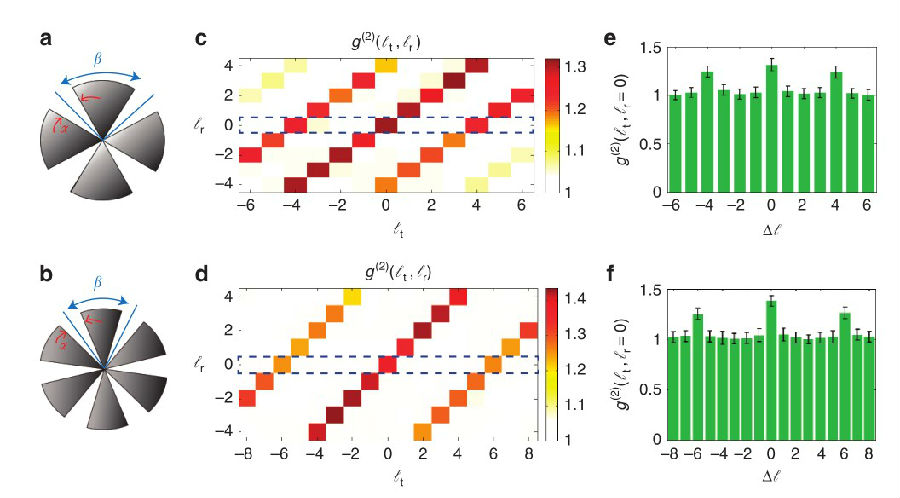
Figure (a, b) Digital spiral identification for amplitude objects with four- and sixfold rotational symmetries. (c,d) The corresponding second-order correlation matrices. (e,f) The rows denoted by the dotted boxes in c and d, respectively.
The angular properties of natural sources of light, such as sunlight, could lead to robust technologies for remote sensing and imaging that perform more favorably than those that employ fragile quantum states of light. Recently, under the guidance of Prof. Guilu Long, Dr. Zhe Yang from the State Key Laboratory of Low Dimensional Quantum Physics demonstrates that fluctuations in OAM intensity seen in natural light can achieve similar imaging correlations at any illumination level. They collaborated with Dr. Omar S Magana-Loaiza and Prof. Robert W Boyd in University of Rochester. They used computer-generated holograms to visualize OAM differences generated when a random light field is split into reference and image interacting beams. The team found signatures of Fourier components, which can be used to recover the specimen’s spatial or phase information. Despite the lack of perfect correlations, these spiral spectra are detectable in a fraction of the time required for quantum entanglement and are immune to environmental noise.
Their paper “Digital spiral object identification using random light” are chosen as the cover story of Light: Science & Application and has published online on July 28th, 2017. Dr. Zhe Yang is the first author and Prof. Guilu Long is one of the corresponding authors.
Link: http://www.nature.com/lsa/journal/v6/n7/abs/lsa201713a.html